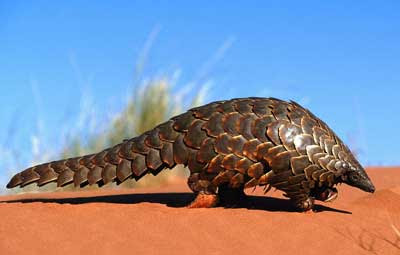My cousin (I won't identify which one) suggested I do a post on hummingbirds. He said he had a couple of hummingbird feeders in his yard and offered to take some pictures and send them to me. I told him a post on hummingbirds was a great idea, but that I had one particular one in mind and wouldn't be able to use his pictures. He emailed me back and said 'a hummingbird is a hummingbird'. Oh really?
There are over THREE HUNDRED species of hummingbirds - somewhere between 325 and 340 - and they are the only birds that can fly backwards. Like bees they are pollination specialists, redistributing pollen as they go from flower to flower. They also take time for an insect high protein snack, sometimes just snatching them out of the air as they fly, for an extra energy boost to keep their high metabolism going.
The one particular hummingbird I had in mind just jumps out and begs for notice - the Marvelous Spatuletail - found only in Peru, and could be considered the Liberace of hummingbirds! And yes, those oval-shaped 'spatulas' are part of his tail.
If you click on the Birding Blog link under the picture, there is a video of the Spatuletail mating display. You really have to see it.
But since my cousin has thrown down the gauntlet, this post will now be about the incredible variety of hummingbirds.
If the Spatuletail is the Liberace of hummingbirds, the Red-tailed Comet is the Elton John of hummingbirds!
And there are other long-tailed hummingbirds, such as the Green-tailed Trainbearer...
and the Green and Black Streamertail...
and one of the larger hummingbirds, the Swallowtail.
Hummingbirds range in size from the smallest, the bee hummingbird, which is about 2 inches and only found in Cuba..
to the Giant Hummingbird measuring around 8 inches, almost as big as a robin.
And there are the hummingbirds with various types of bills, short, curved or extremely long, evolved and perfectly designed to extract nectar from specific flowers, like the Bronzy Hermit Hummingbird...
and the Purple-throated Carib...
or the Sword-billed hummingbird...
or the white-tipped sicklebill...
or the Rainbow-bearded Thornbill.
Photo by Scott Olmstead Source:
IBC
And, as you can see, there are hummingbirds of every color combination, some more flamboyant, others a bit more discreet. Like the Gould's Jewelfront...
or the Lucifer Hummingbird...
or the Chestnut-breasted Coronet.
Source: Amazonia Lodge
And a few with hardly any color at all, like the Gray-breasted Sabrewing.
Source: Amazonia Lodge
There are even crested hummingbirds, like the Rufous-Crested Coquette.
How cute is he? Don't you just love some of their names? So, cousin, do you still think a hummingbird is a hummingbird? Only a little over 300 more to go.






























